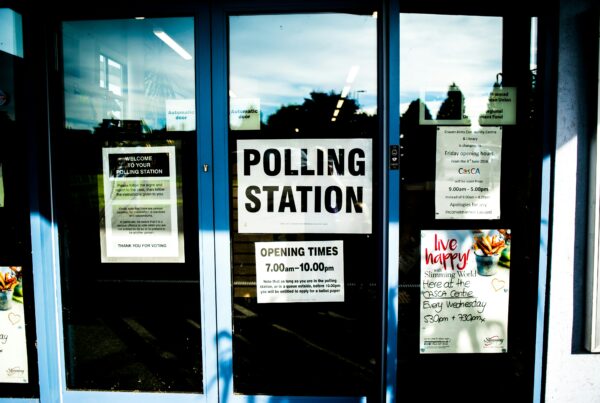 FPC’s Independent Economic Consultant, Peter Stanyer looks at the Chancellor’s spending review and its implications for the economy.
FPC’s Independent Economic Consultant, Peter Stanyer looks at the Chancellor’s spending review and its implications for the economy.
On 25th November the Chancellor announced his annual government spending review. This time he has avoided detail on departmental spending over the next five years because of the uncertainty about the evolution of the Covid pandemic and the impact of policy on the economy. On one level there was little new in the projections: the forecasts for GDP in 2020 (-11.3 %) is in line with earlier official estimates though the rebound next year is now a little flatter. The superficially strong GDP growth figures for the next two years only succeed in getting UK GDP back to 2019 levels by the start of 2023. These are central forecasts, assuming for example no further major lockdowns and also that the UK reaches a Free Trade Agreement with the EU by the end of this year.
It is not new news that the government borrowing numbers are extraordinarily large, reaching almost £400 billion in 2020-21 that is 19% of GDP. The deficit falls back quite quickly, to just over £100 billion or 3.9% of GDP by 2025-26, as much of the Covid related temporary government spending (furlough and the other lockdown related business and employment support measures) fall away, but this still signifies extra borrowing each year. The national debt is projected to reach 105% of GDP by next March. Over the following years, continued recovery of growth and the assumed end of exceptional pandemic spending, sees the national debt increase only modestly as a percent of GDP to just under 110% by 2025. This may be papering over some very difficult policy choices on the details of public spending and taxation.
The central forecasts are accompanied by four alternative scenarios, one of which is an estimate of the impact of a last-minute breakdown in negotiations with the EU. This scenario assumes that trading with the EU resorts to WTO (World Trade Organisation) terms, which is calculated to lower the level of UK GDP by 2% in 2021 and by 1.5% by 2025. Intuitively, this sounds quite a modest cost of reaching no agreement with the EU but the detailed impact of this would be very industry specific. Most of the report focusses on the three other scenarios: upside, central and downside.

Source: OBR, November 2020
The sensitivity and uncertainty of these forecasts is highlighted by the scale of the differences between the “upside” and “downside” scenarios in OBR’s unemployment chart. The upside and downside scenarios differ in the assumed optimism or pessimism about the prospects for quelling the pandemic and the associated public health restrictions. The ‘upside’ scenario assumes no new restrictions after this December, and it projects that unemployment could be back to pre-Covid levels of around 3.9% of the labour force by March 2022. Though the economy is undergoing rapid change, this optimistic scenario suggests surprisingly little long-term damage to the prospects for the UK economy. The ‘downside’ scenario in contrast, assumes that vaccination proves less successful than hoped and that a third wave of the pandemic leads to further restrictions on socialisation around the world in 2021. In this scenario UK unemployment would be expected to peak at 11.0% of the labour force in early 2022. The OBR’s central forecast is for unemployment to be 7.0% in March 2022.
An alternative future: *
The OBR report paints a future of low inflation, low interest rates and disappointingly slow productivity growth. In this view of the world, servicing the very large national debt should not be too difficult as interest rates stay low for the foreseeable future (as is implied by the pricing of UK government gilts). However, the growing burden over the decades ahead of funding social care and the NHS is largely sidestepped at present, but it will not go away.
Some influential economists are suggesting an alternative future, drawing upon the implications of the enormous global changes in the demographic balance between those of working age and, on the other hand, the young and those who are retired (the so-called “dependency ratio”). They see an abundant supply of labour to the global market economy in the decades after the liberalisation of the Chinese economy and integration of the former Soviet Union and eastern Europe into the market economy now being replaced for the first time in half a century with a tighter global labour market. This is likely, over time, to reverse the steady decline in the share of wages in the economy and this would rekindle inflation and lift interest rates around the world.
The decline in share of the innovative and flexible young in the labour force may hold back productivity growth. Offsetting this, a shortage of labour and interruptions to the supply of labour give strong encouragement to make more use of machines and robots and less of increasingly expensive labour. If spread across the whole economy, such regeneration of business provides the route to future prosperity. However, faster inflation would quickly (surprisingly quickly, the OBR report implies) lead to the burden of interest payments on the national debt becoming very much larger. In this scenario, questions of the sustainability of the debt burden could surface unpleasantly quickly, despite the Treasury’s apparent ability to borrow very inexpensively for up to 40 years. At the same time, a resurgence of inflation may equal that of higher taxation as probably the greatest threats to the sustainable living standards of private investors, both of which are risks that need to be considered and managed by investors going forward.





